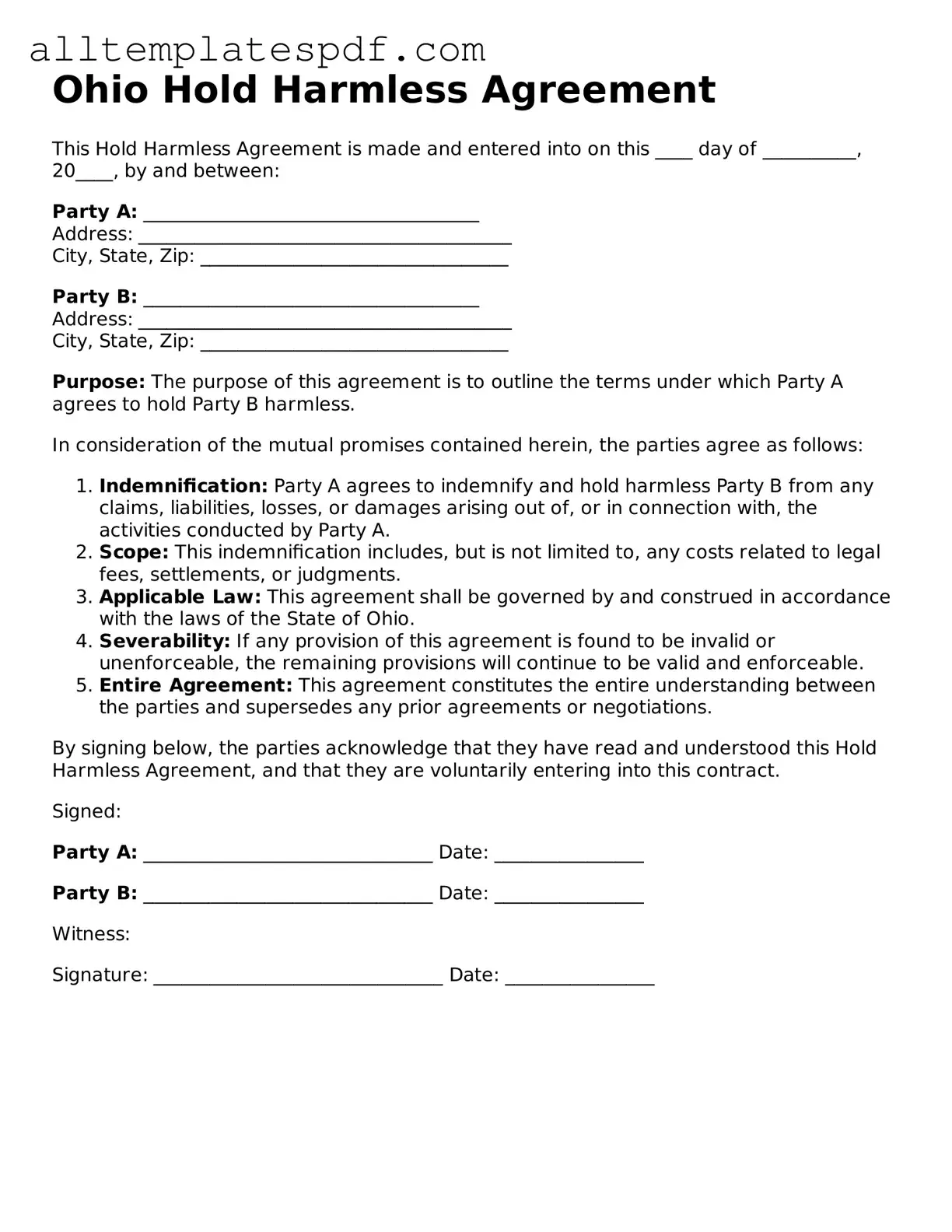Instructions on Utilizing Ohio Hold Harmless Agreement
Completing the Ohio Hold Harmless Agreement form requires careful attention to detail. This document is essential for ensuring that all parties understand their responsibilities and liabilities. Follow these steps to fill out the form accurately.
- Begin by downloading the Ohio Hold Harmless Agreement form from a reliable source.
- Read through the entire document to familiarize yourself with its sections and requirements.
- In the first section, enter the names of all parties involved. Include full legal names and any relevant titles.
- Next, provide the addresses for each party. Make sure these are current and accurate.
- In the designated area, clearly describe the activity or event for which the agreement is being made.
- Indicate the date of the event. This should be the specific date when the activity will occur.
- Review the indemnification clause carefully. Ensure you understand what liabilities you are agreeing to hold harmless.
- Sign the form where indicated. Each party must provide their signature to validate the agreement.
- Date your signature to confirm when you signed the document.
- Make copies of the completed form for all parties involved. This ensures everyone has a record of the agreement.
Once the form is filled out and signed, it is advisable to keep it in a safe place. Each party should retain a copy for their records. This will help prevent misunderstandings in the future.
